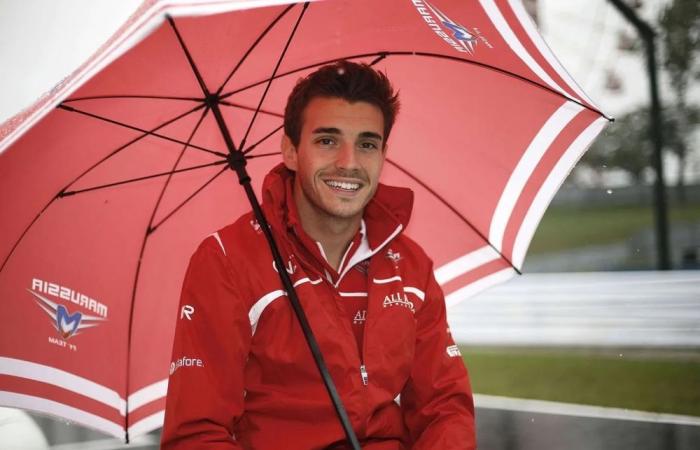
The thirtieth edition of the Japanese Grand Prix will forever remain a painful memory for all those involved in Formula 1, but also for all lovers of the discipline. On October 5, 2014, despite torrential conditions caused by Typhoon Phanfone, the race on the Suzuka circuit continued. A dramatic accident cost the death of French pilot Jules Bianchi a few months later. There had not been a death in Formula 1 for more than 20 years and the weekend when Ayrton Senna and Roland Ratzenberger died.
Motors Inside sans pub ?
Subscribe
A tragic accident
The track conditions were disastrous, with heavy rain, which led to Adrian Sutil going off the track in his Sauber, leading to the deployment of the safety car. A crane was then sent onto the track to free the German driver’s car, the other F1 cars still being on the track.
Despite the presence of the safety car, which significantly slowed down the pace of the race, the track remained dangerous and two laps later, it was the Frenchman Jules Bianchi who lost control of his Marussia. At this moment, no information is given as to the reasons for his exit from the track and no one suspects the tragic turn this race will take.
Television did not film the Frenchman’s accident live, but the red flag was waved and all the drivers had to return. We still don’t know that there was a serious accident, but after a few minutes, we realize that Bianchi’s car is missing.
After long minutes without any news from the Frenchman, the world of F1 plunged into silence: it was announced that Jules Bianchi had violently hit the crane which was trying to extract Adrian Sutil’s car. No image is broadcast, because of the violence of the impact, measured at 92G at its peak.
Emergency services rush to the scene as quickly as possible, but Jules is found unconscious in his car. He was immediately transported to the nearest hospital and the Grand Prix was definitively stopped. For the rest of the paddock, the situation is unbearable.
The news regarding the Frenchman’s state of health comes: he is in critical condition, alive, but in a coma. Hospitalized in Japan, the first operations were carried out there urgently. It wasn’t until the next day that more and more videos of the accident began to emerge. We see the Marussia pulling straight towards the lifting machine, then hitting the rear of the crane at high speed. Everyone then realizes that the accident is not trivial. Jules Bianchi is hit directly in the helmet.
A month after his accident, he was repatriated to Nice, his hometown, and the news was given with little optimism. The F1 driver died on July 17, 2015. That day, the world of F1 lost one of its most promising talents, but above all, a man appreciated by all the drivers in the paddock and the media, who knew mark the spirits in many ways.
Jules Bianchi was one of the first French drivers interviewed by Motors Inside, along with Charles Pic at the time. His smile and good humor remain in our memories.
The birth of the Halo
Following Jules’ accident, but also that of María de Villota, in private testing, buried under a truck, safety in Formula 1 was reinforced with the appearance of the Halo, a carbon protection intended to protect the heads of the pilots so as not to see this situation happen again
Introduced in 2018, it was quickly praised for its effectiveness. It is thanks to this device that drivers like Charles Leclerc, Lewis Hamilton, and Guanyu Zhou were able to emerge unscathed from their respective accidents. It is also this same device that saved the life of Romain Grosjean during his impressive accident in Bahrain in 2020.
Many tributes from the pilots
Every year, many pilots pay tribute to the Frenchman, including Charles Leclerc, godfather of the Jules Bianchi association and his lifelong friend.
This year, he notably participated in the Jules Bianchi marathon, a Karting race which pays tribute to him.
A moving moment for the Monegasque, who regularly reminds us that without Jules, he would not be in Formula 1: “In 2010, my father no longer had enough money to finance my years of karting. It was to be my last year. But Jules told his manager, Nicolas Todt, about me, who then paid for everything for me until I arrived in Formula 1. Without Jules, I would be nowhere. »
After his victory at the Hungarian Grand Prix in 2015, Sebastian Vettel also paid a moving tribute to Jules.
Once the finish line was crossed, the Ferrari driver spoke on the radio, turning his thoughts towards the Frenchman: “Thank you Jules, this victory is for you. You will always be in our hearts. We all know that one day you would have been part of this team”. Jules was in fact expected to join the Scuderia, a dream he had been pursuing for a long time.
Jules’ legacy will continue to live on through every turn taken on the track and in the hearts of all who knew him.





